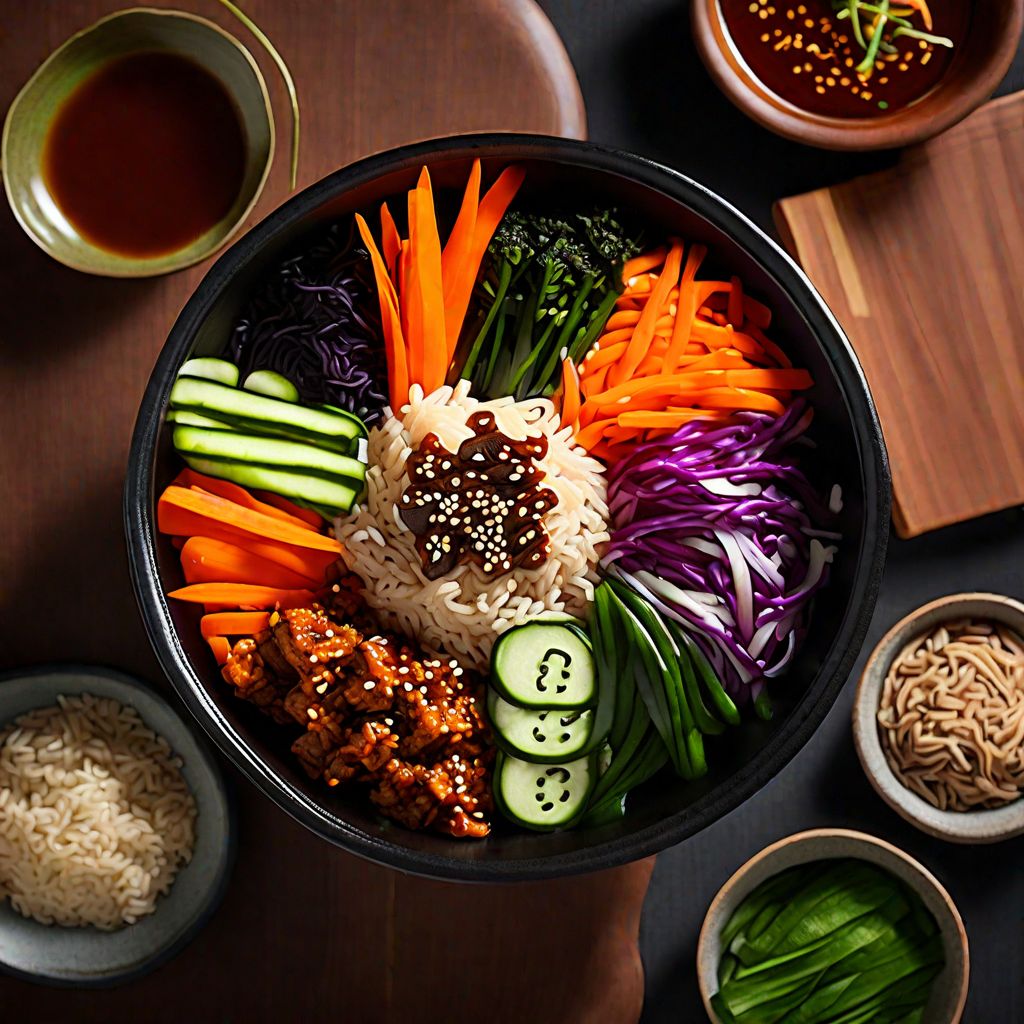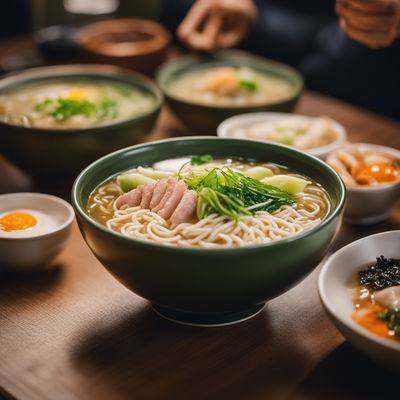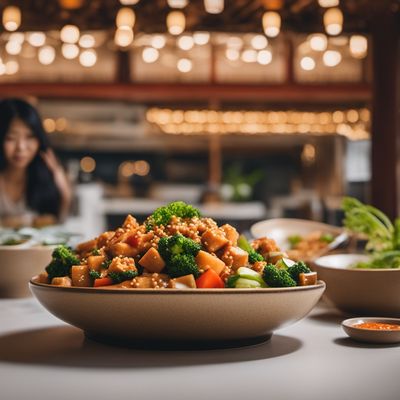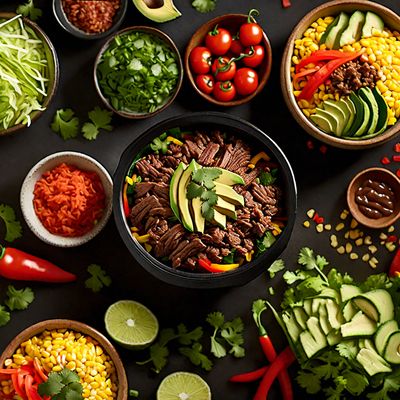
Recipe
Vegan Bibimbap
Plant-Powered Bibimbap: A Vegan Twist on a Korean Classic
4.9 out of 5
In the realm of vegan cuisine, Bibimbap is a delightful dish that brings together a vibrant array of flavors and textures. This plant-powered version of the traditional Korean dish replaces the meat and eggs with wholesome vegan ingredients, while still capturing the essence of Bibimbap. Get ready to indulge in a colorful and nourishing bowl that celebrates the beauty of vegan cooking.
Metadata
Preparation time
30 minutes
Cooking time
15 minutes
Total time
45 minutes
Yields
4 servings
Preparation difficulty
Medium
Suitable for
Vegan, Vegetarian, Gluten-free, Dairy-free, Nut-free
Allergens
Soy, Sesame
Not suitable for
Paleo, Keto, Low-carb, High-protein, Carnivorous
Ingredients
The vegan adaptation of Bibimbap replaces the traditional meat and eggs with plant-based alternatives. Instead of beef, tofu or tempeh can be used for a protein-rich element. The eggs are substituted with scrambled tofu or a vegan egg replacement. Additionally, the sauce may be adjusted to exclude any non-vegan ingredients such as fish sauce or honey, while still maintaining the signature flavors of Bibimbap. We alse have the original recipe for Bibimbap, so you can check it out.
-
2 cups (470ml) cooked rice 2 cups (470ml) cooked rice
-
8 ounces (225g) firm tofu or tempeh, sliced into strips 8 ounces (225g) firm tofu or tempeh, sliced into strips
-
2 tablespoons soy sauce 2 tablespoons soy sauce
-
1 tablespoon sesame oil 1 tablespoon sesame oil
-
1 tablespoon maple syrup 1 tablespoon maple syrup
-
1 tablespoon rice vinegar 1 tablespoon rice vinegar
-
1 tablespoon gochujang (Korean chili paste) 1 tablespoon gochujang (Korean chili paste)
-
1 tablespoon vegetable oil 1 tablespoon vegetable oil
-
1 cup (150g) julienned carrots 1 cup (150g) julienned carrots
-
1 cup (150g) julienned zucchini 1 cup (150g) julienned zucchini
-
1 cup (150g) bean sprouts 1 cup (150g) bean sprouts
-
1 cup (150g) sliced mushrooms 1 cup (150g) sliced mushrooms
-
2 cups (100g) fresh spinach 2 cups (100g) fresh spinach
-
2 cloves garlic, minced 2 cloves garlic, minced
-
Salt, to taste Salt, to taste
-
Sesame seeds, for garnish Sesame seeds, for garnish
-
Sliced green onions, for garnish Sliced green onions, for garnish
Nutrition
- Calories (kcal / KJ): 350 kcal / 1465 KJ
- Fat (total, saturated): 12g, 2g
- Carbohydrates (total, sugars): 45g, 8g
- Protein: 15g
- Fiber: 7g
- Salt: 2g
Preparation
-
1.In a small bowl, combine soy sauce, sesame oil, maple syrup, rice vinegar, and gochujang to make the sauce. Set aside.
-
2.Heat vegetable oil in a large skillet over medium heat. Add tofu or tempeh strips and cook until golden brown. Remove from skillet and set aside.
-
3.In the same skillet, add carrots, zucchini, bean sprouts, and mushrooms. Sauté for 3-4 minutes until vegetables are tender. Remove from skillet and set aside.
-
4.In the same skillet, add spinach and minced garlic. Sauté until spinach wilts. Remove from skillet and set aside.
-
5.Divide the cooked rice among serving bowls. Arrange the cooked tofu or tempeh, sautéed vegetables, and sautéed spinach on top of the rice.
-
6.Drizzle the sauce over the ingredients in each bowl.
-
7.Garnish with sesame seeds and sliced green onions.
-
8.Serve hot and mix all the ingredients together before eating.
Treat your ingredients with care...
- Tofu or tempeh — Press the tofu to remove excess moisture before slicing. Marinate the tofu or tempeh in soy sauce and sesame oil for added flavor.
- Gochujang — Adjust the amount of gochujang according to your spice preference. Add more for a spicier Bibimbap or reduce for a milder version.
- Rice — Use short-grain rice for an authentic Bibimbap experience. Cook the rice slightly sticky to hold the ingredients together.
Tips & Tricks
- To add extra crunch, lightly toast the sesame seeds before garnishing.
- Customize your Bibimbap by adding other vegetables such as bell peppers or radishes.
- For a gluten-free option, ensure that the soy sauce and gochujang used are gluten-free certified.
- Experiment with different vegan protein options like seitan or chickpeas.
- If you prefer a softer texture, steam the vegetables instead of sautéing them.
Serving advice
Serve the Vegan Bibimbap hot and mix all the ingredients together before eating. This allows the flavors to meld together and ensures each bite is a harmonious blend of textures and tastes.
Presentation advice
When serving Vegan Bibimbap, arrange the colorful vegetables and tofu or tempeh on top of the rice in an aesthetically pleasing manner. Sprinkle sesame seeds and sliced green onions on top for an added pop of color.
More recipes...
For Bibimbap » Browse all
For Korean cuisine » Browse all
More Korean cuisine dishes » Browse all

Onmyeon
Cold noodle soup
Onmyeon is a Korean cold noodle dish that is perfect for hot summer days. The dish is made with thin, chewy noodles made from wheat flour, potato...

Oi sobagi
Cucumber kimchi
Oi sobagi is a traditional Korean side dish made with stuffed cucumbers. It is a refreshing and spicy dish that is often served with rice and...

Nadugi
Nadugi is a Korean dish that is made with tofu, vegetables, and a spicy sauce. It is a healthy and flavorful dish that is perfect for vegetarians.











